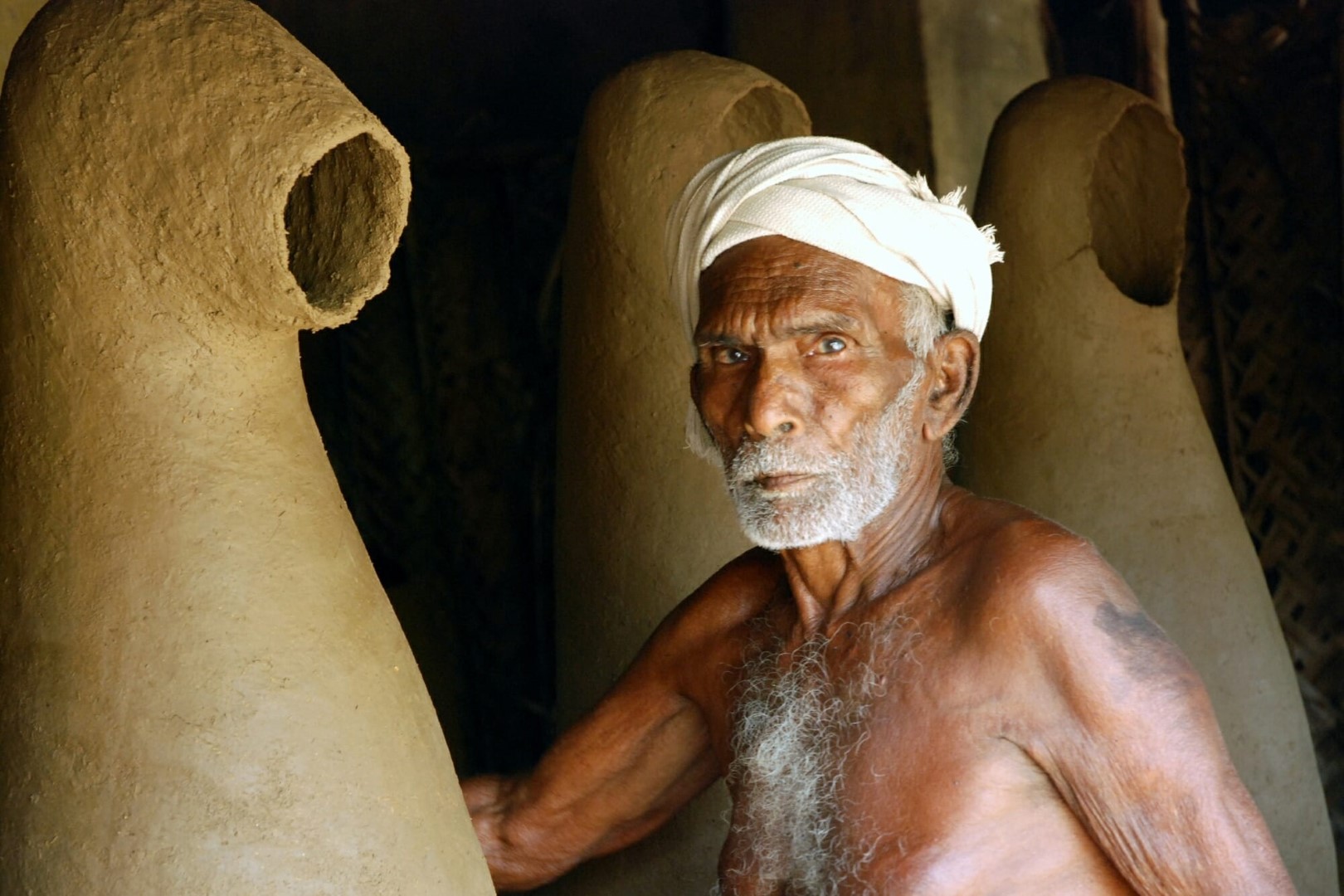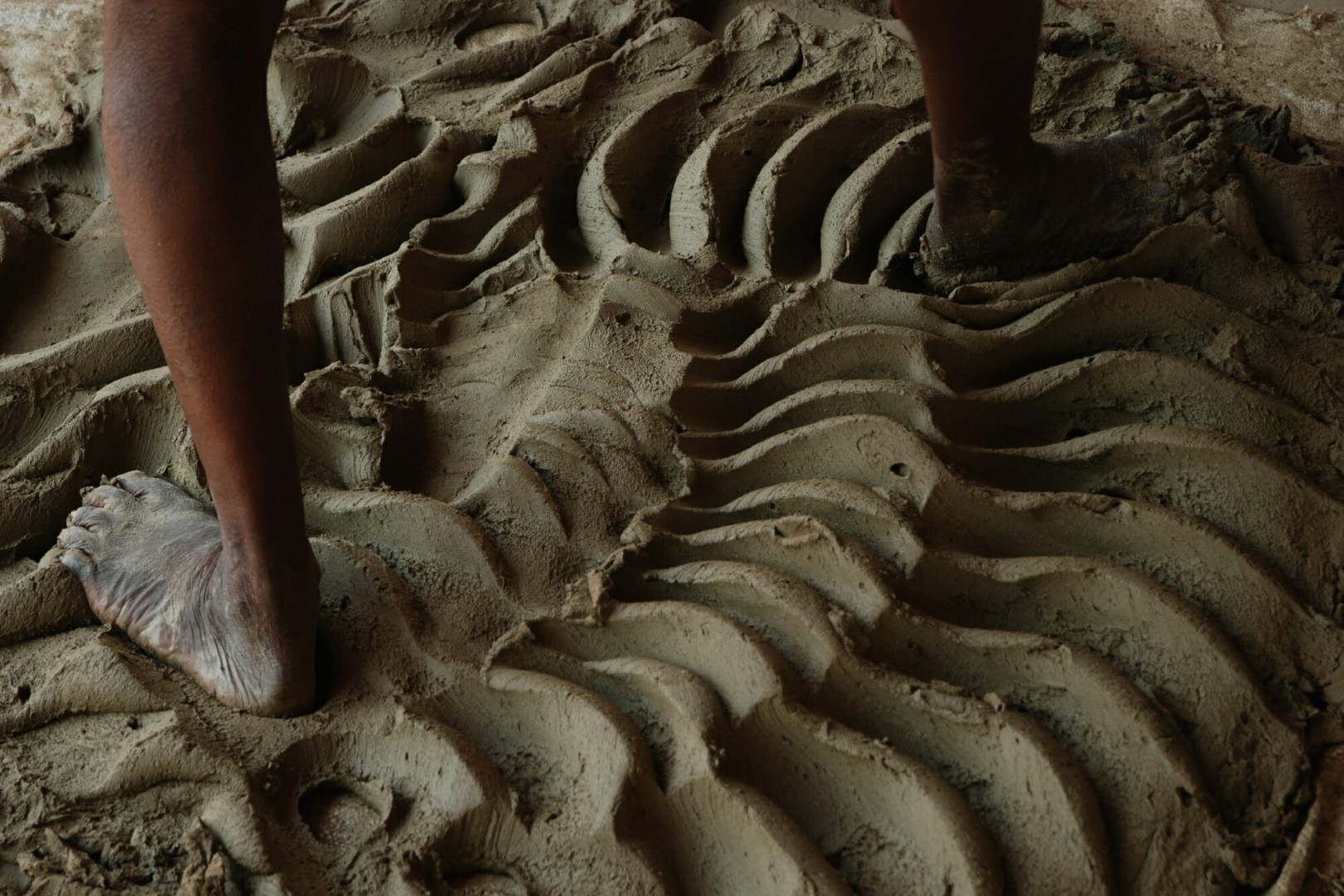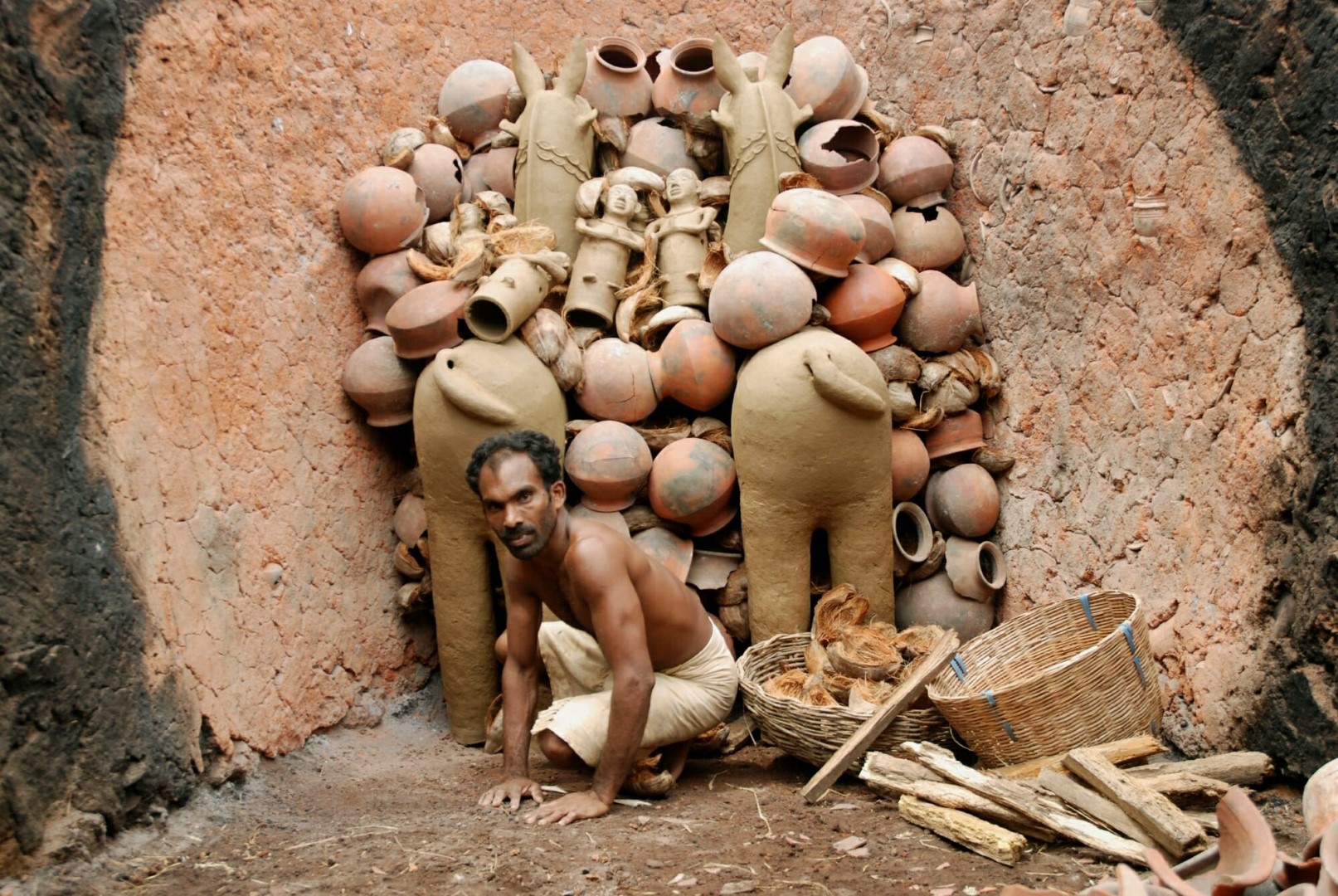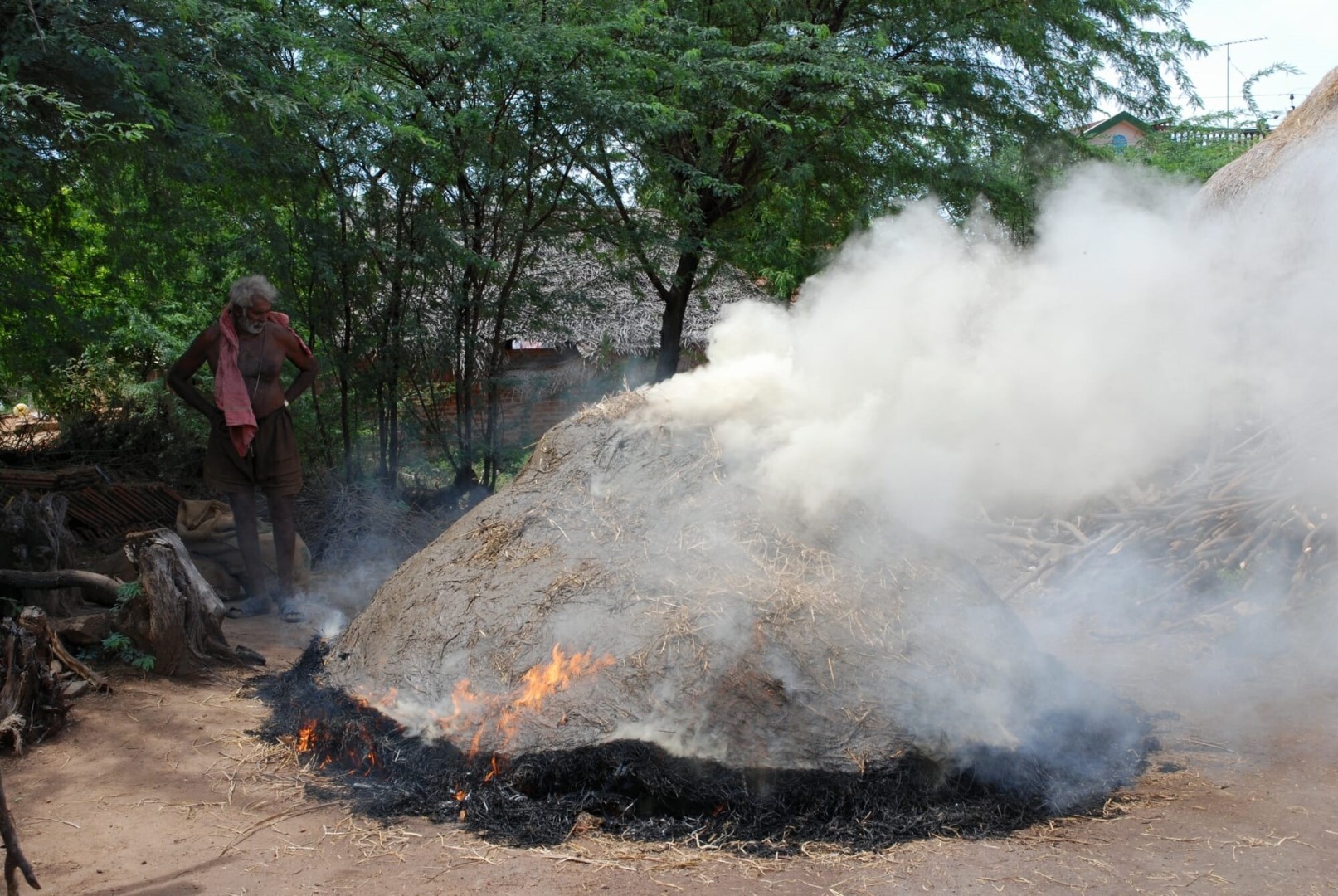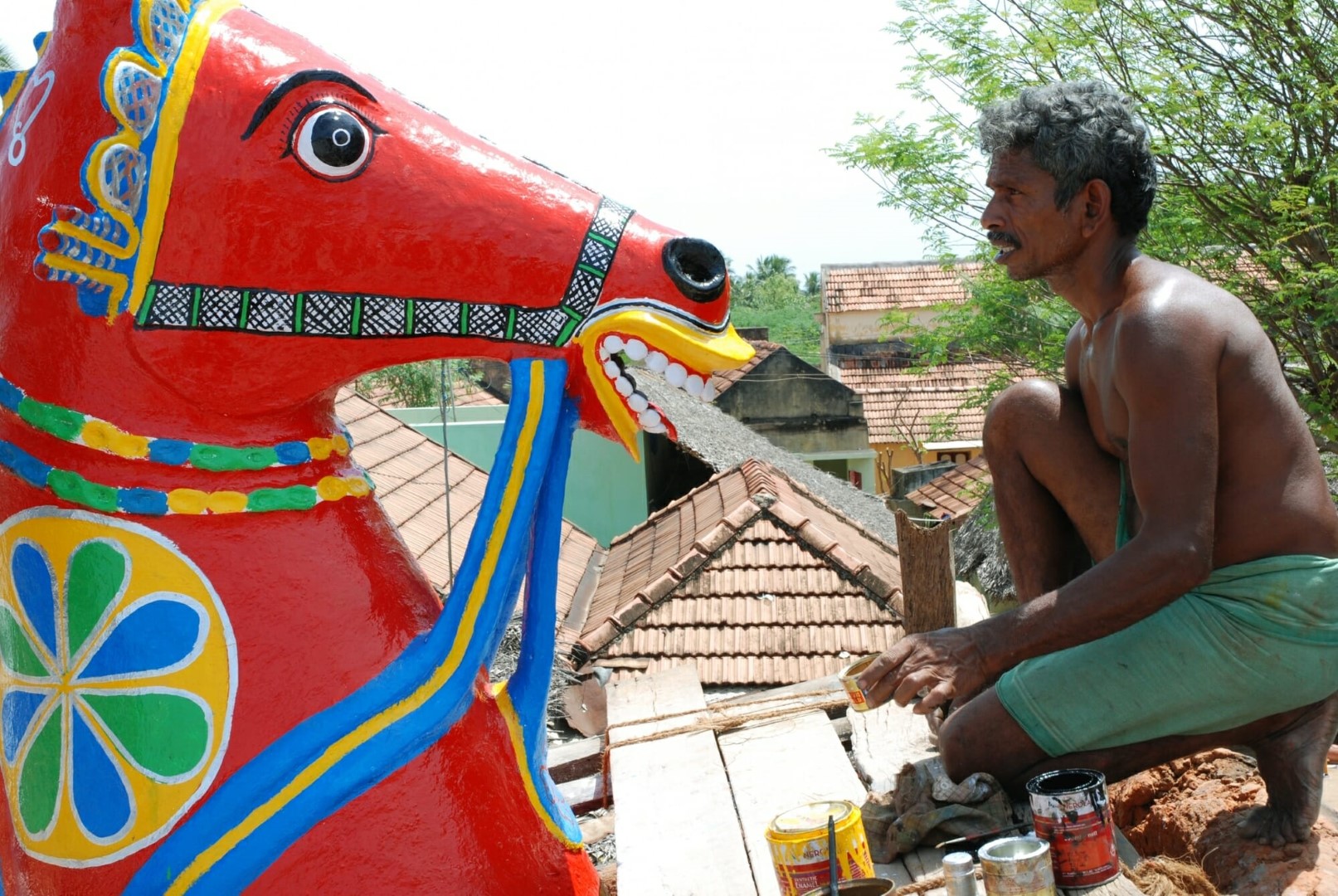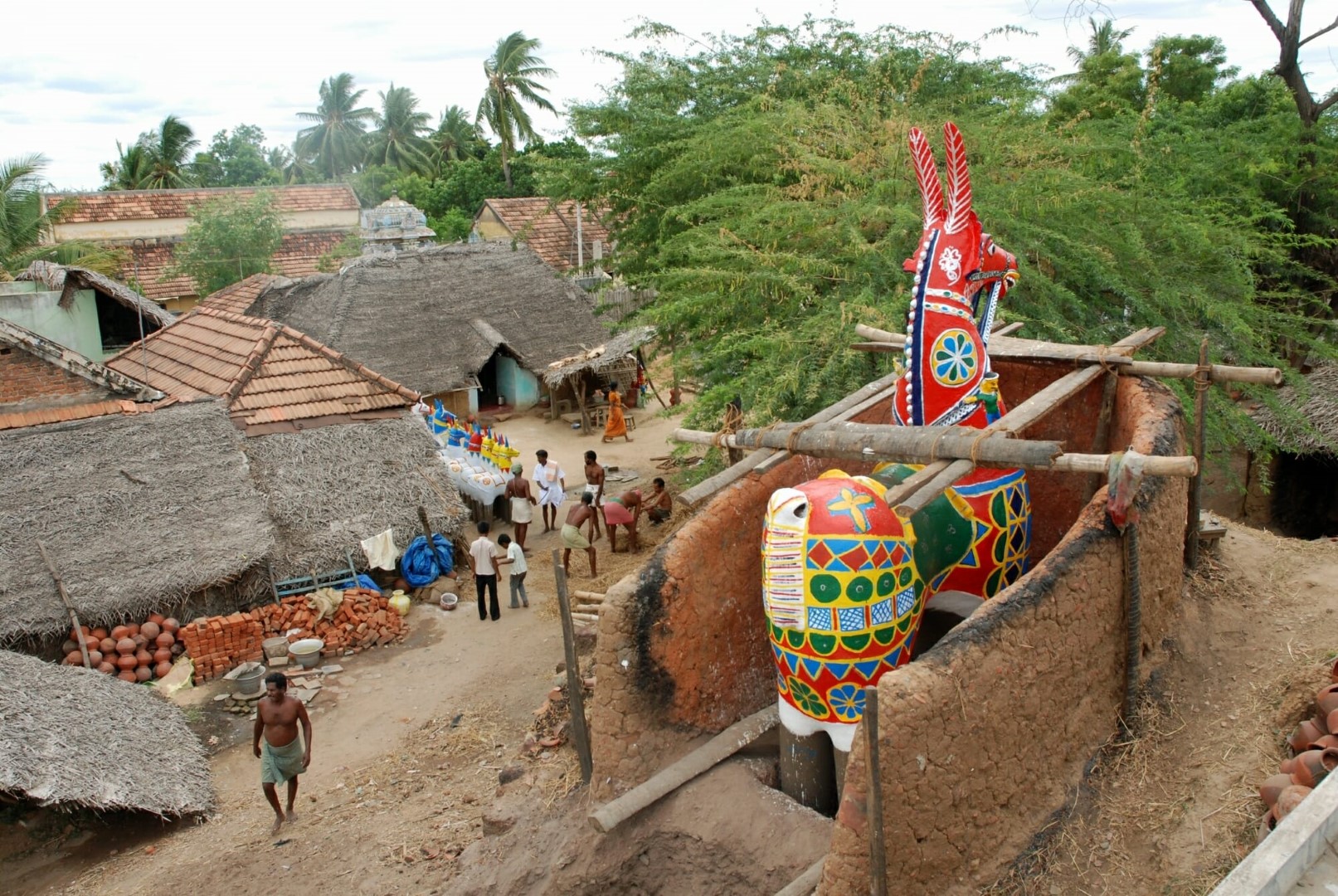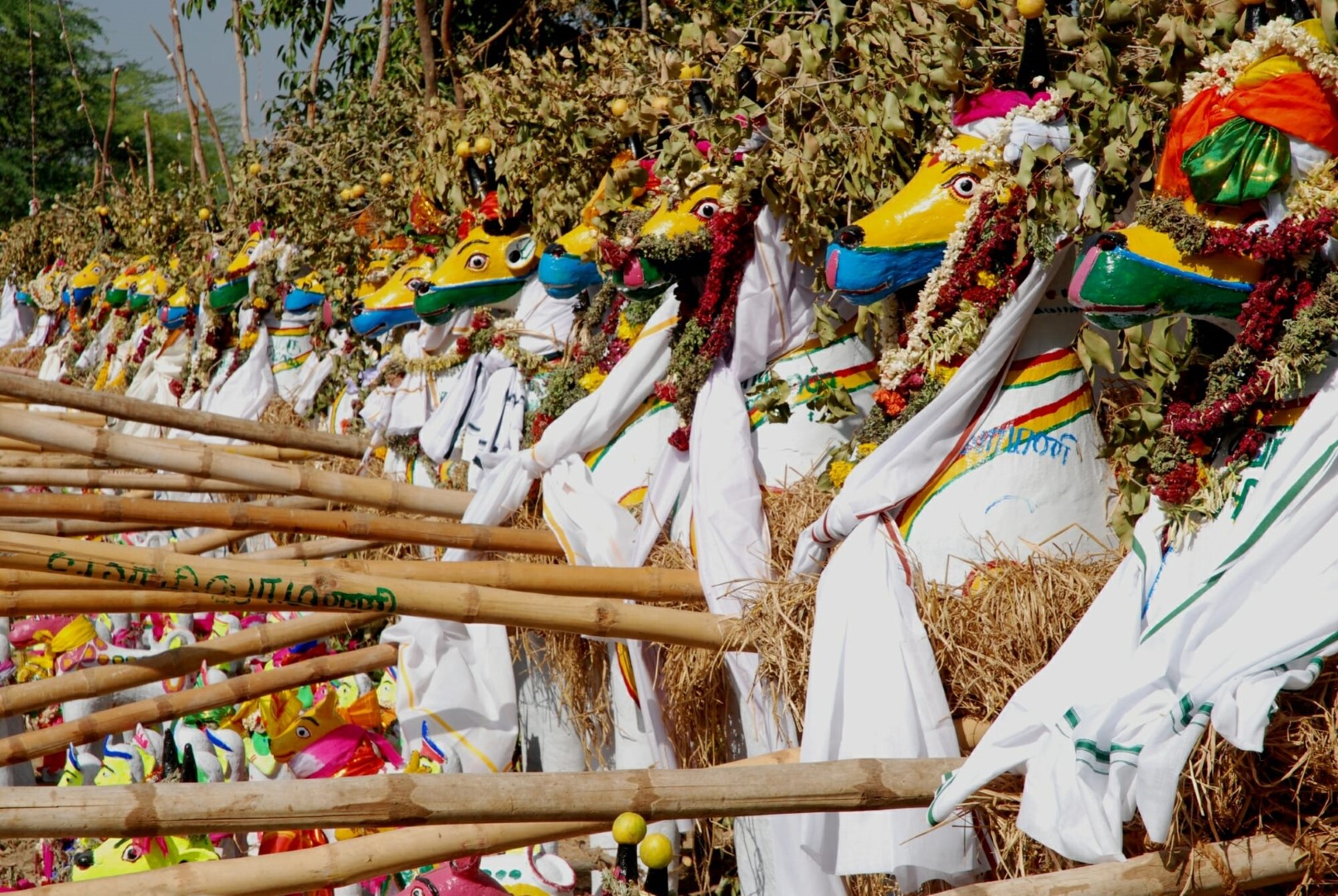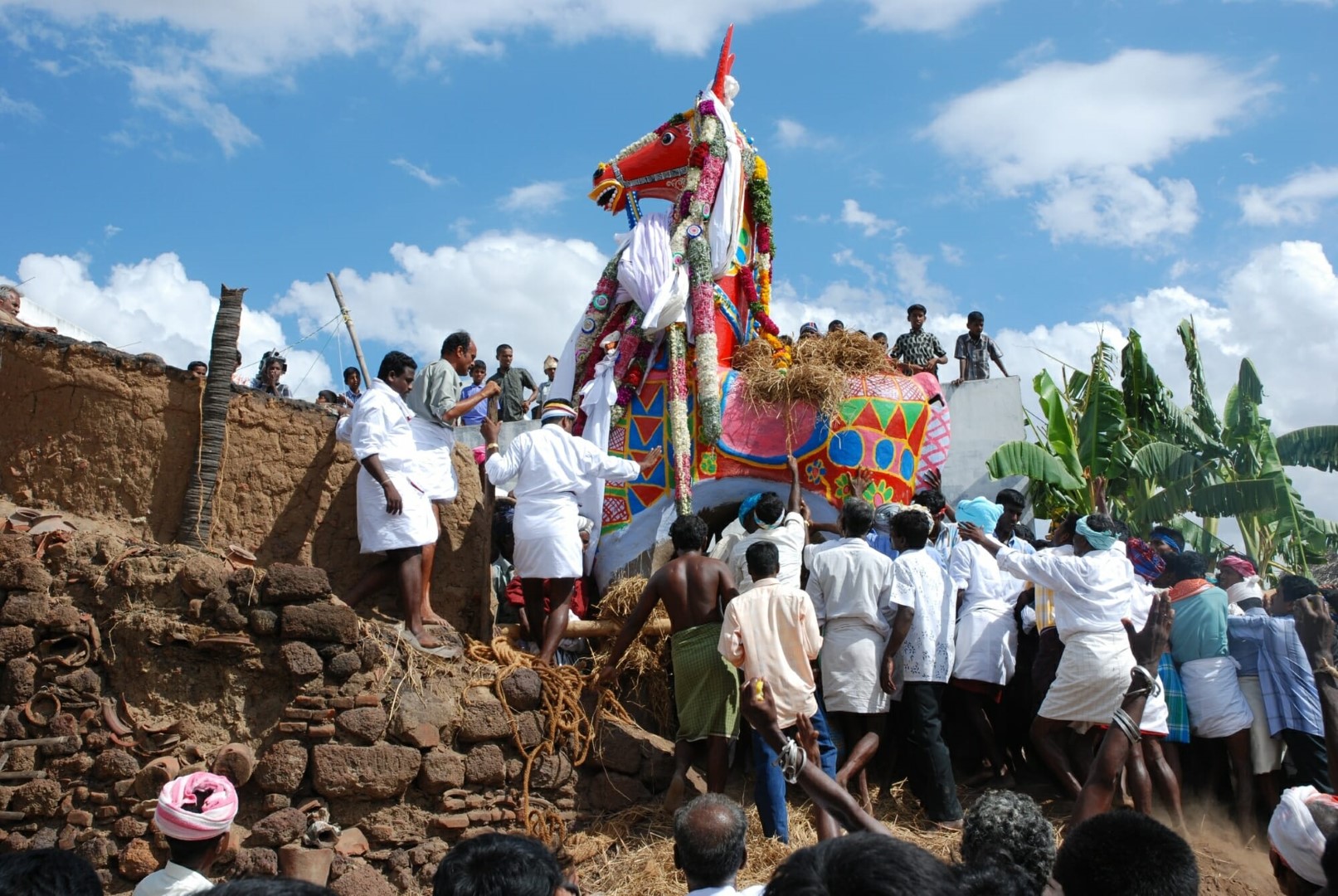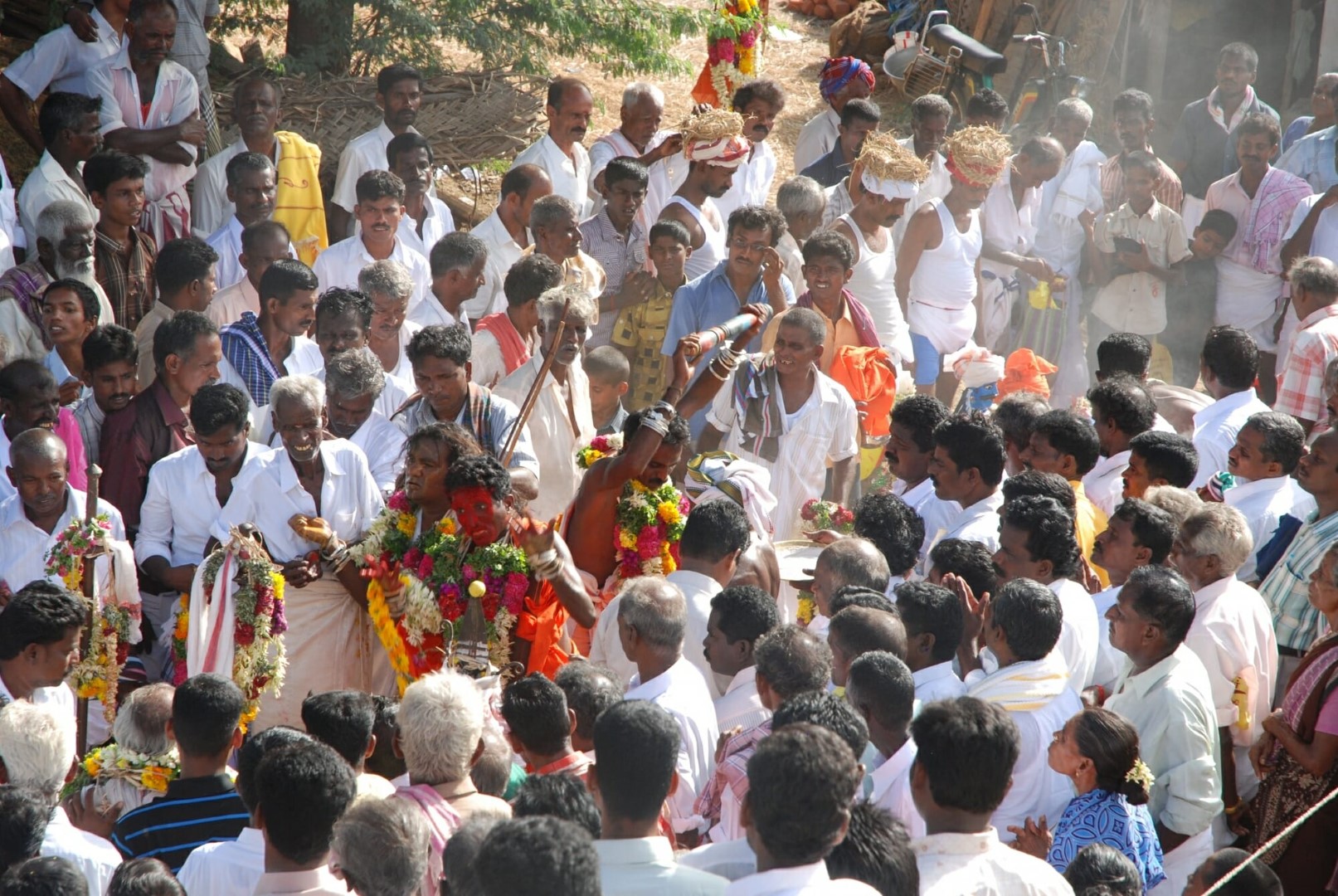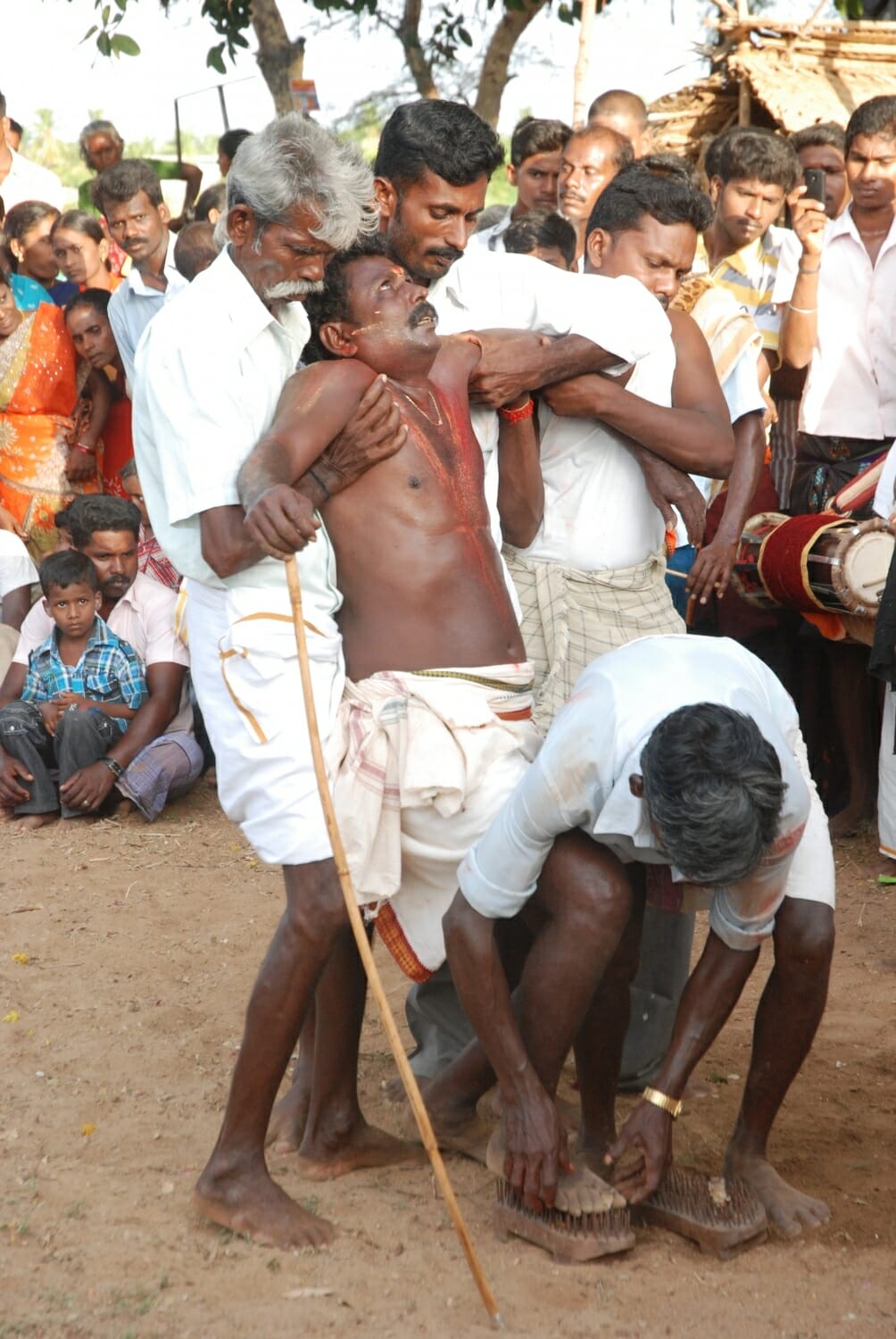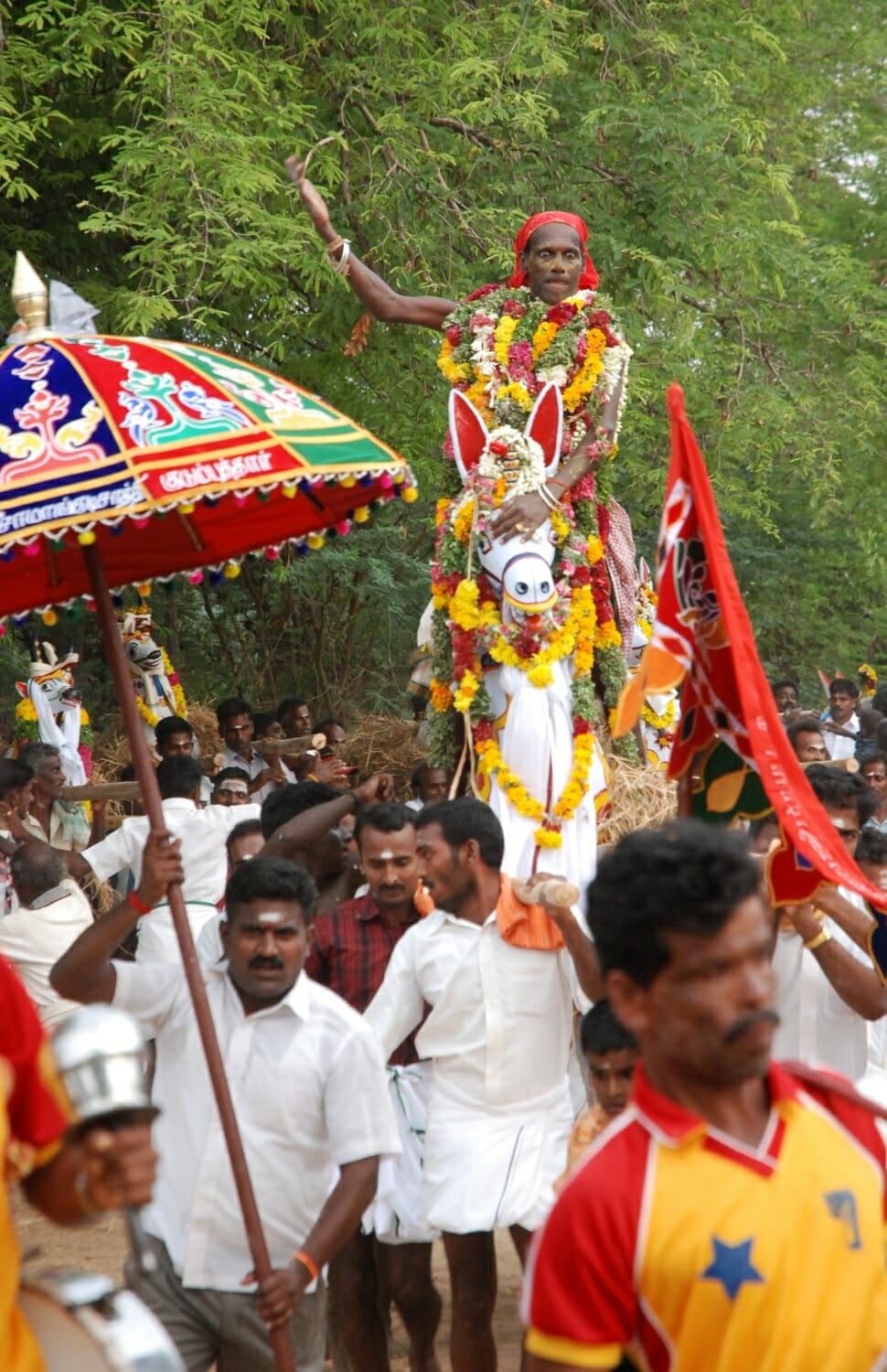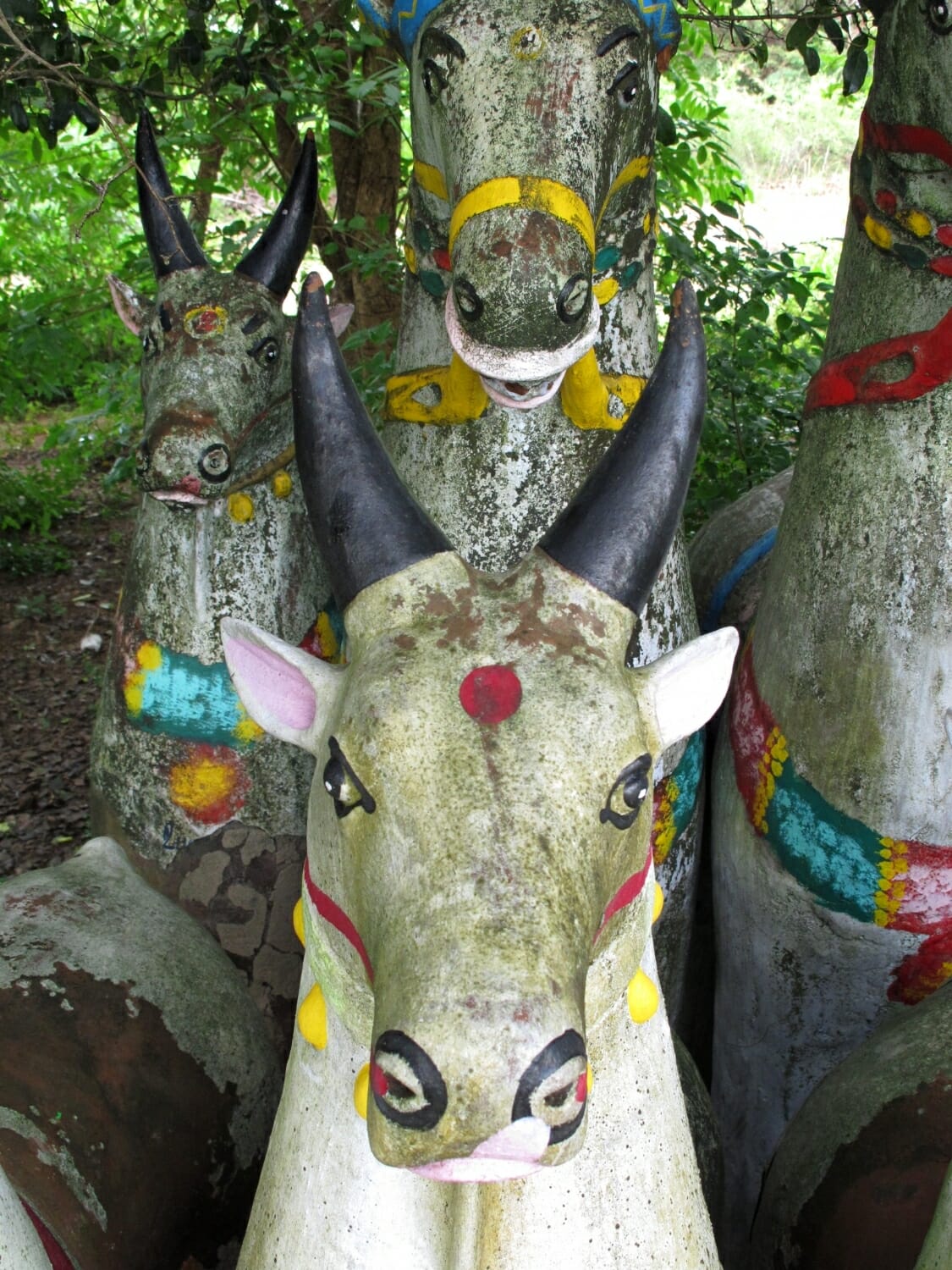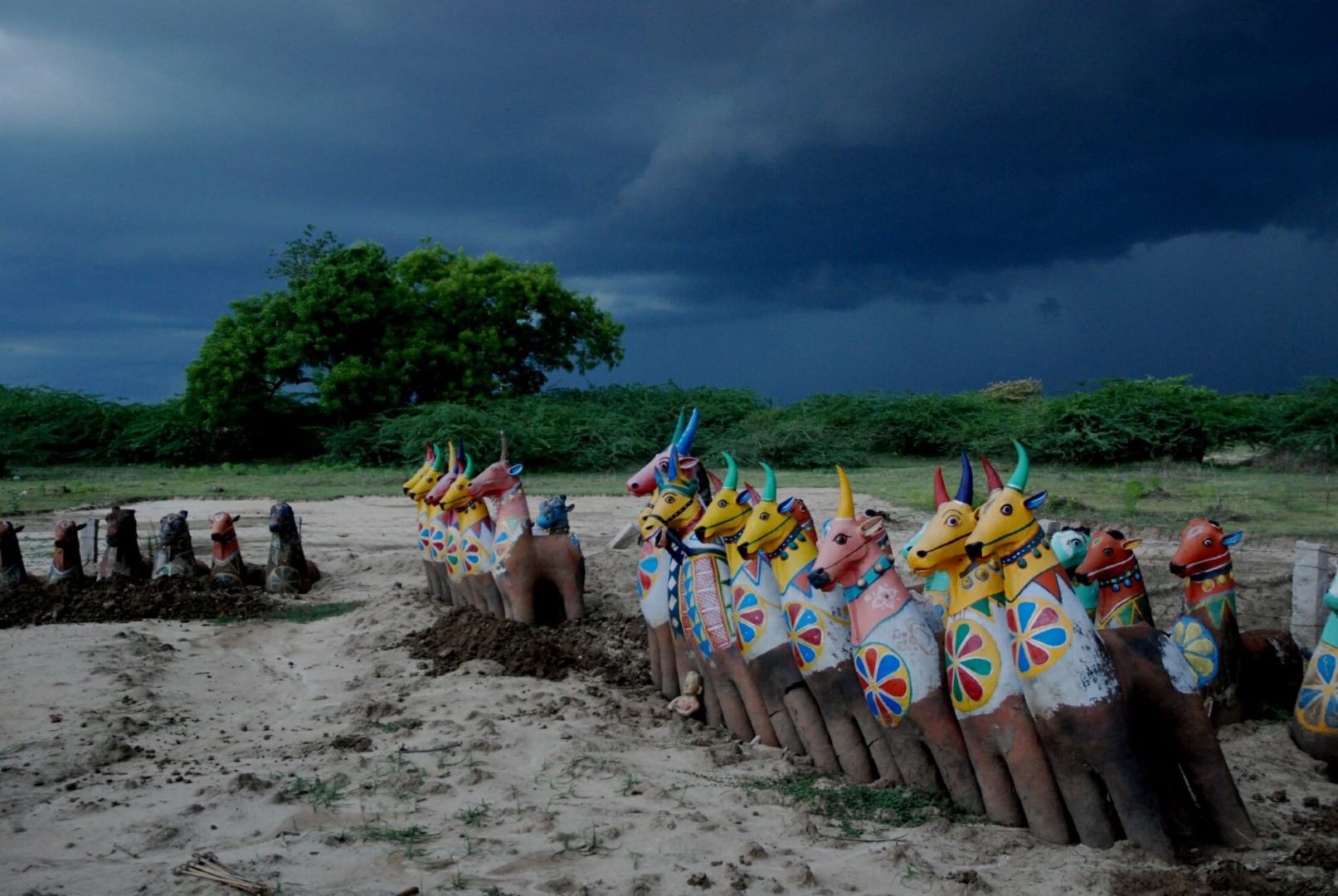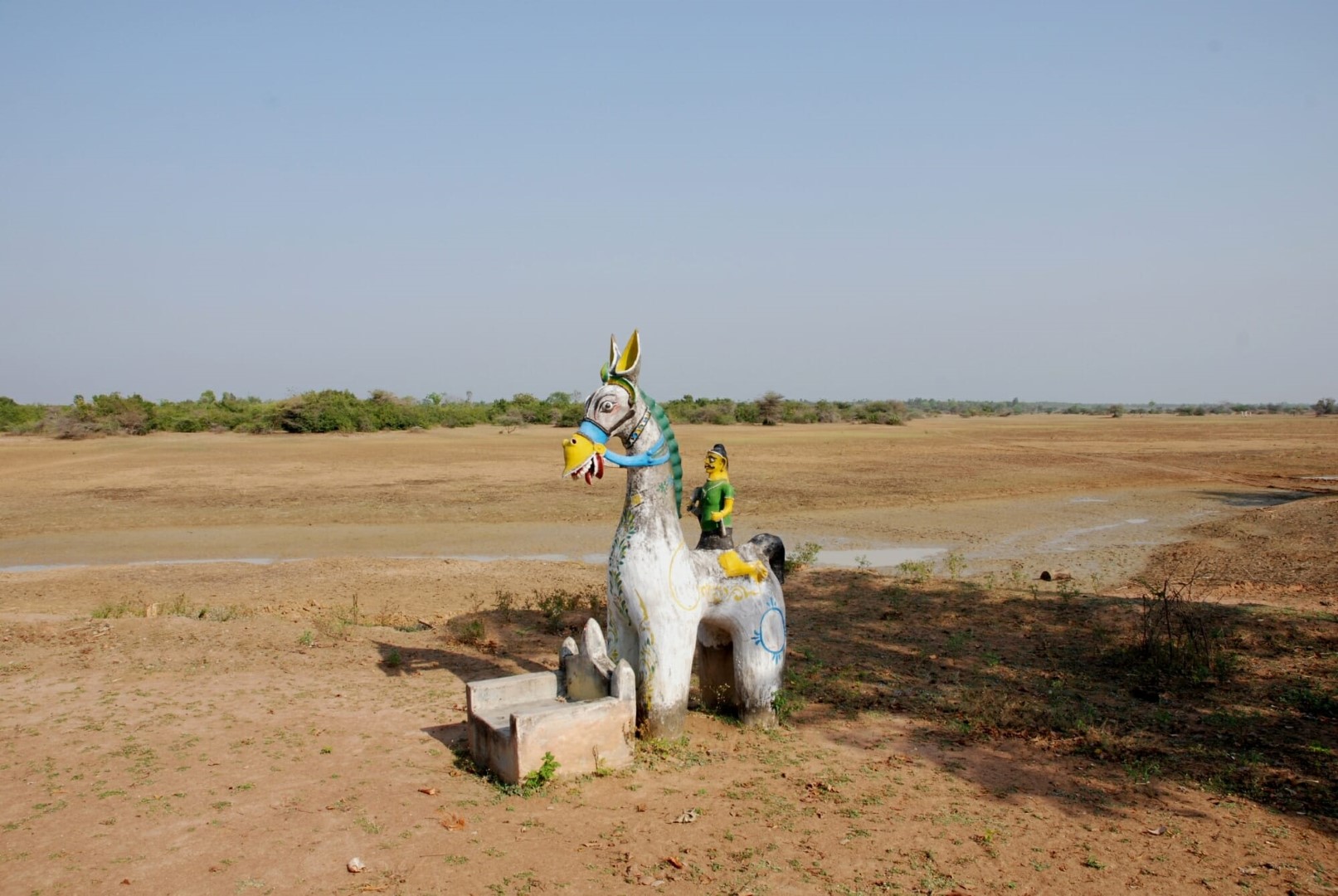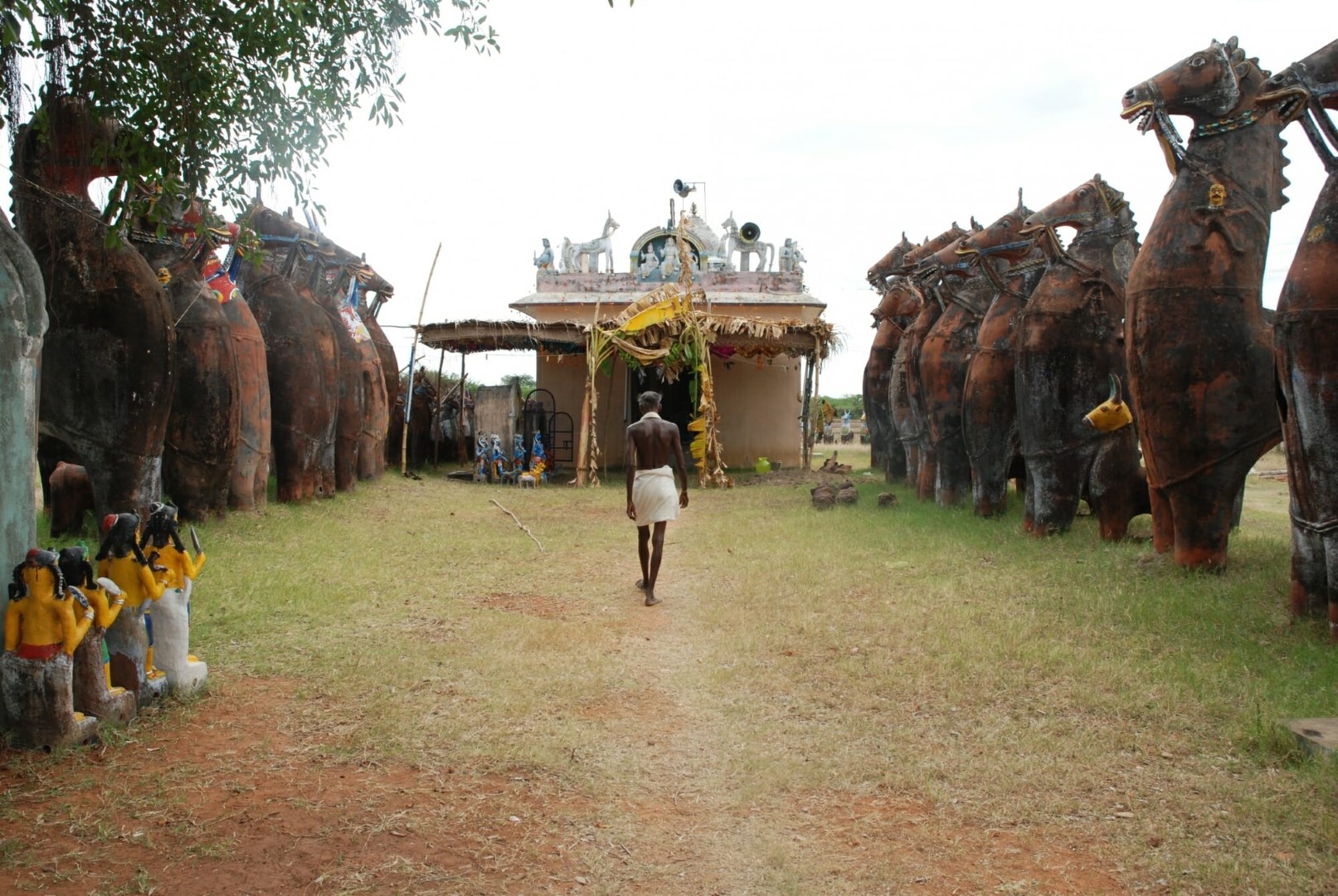In 2003, I began what become an extensive photographic and written documentation of the Ayyanar cult of Tamil Nadu: the shrines and the terracotta offerings that are dedicated to him, the rituals and festivals in his honour; the potters who create the offerings, the various other actors in the cult (priests, village elders, villagers, etc). My research lasted ten years. Along with detailed plans of dozens of shrines, interviews, stories, notes and texts, I made hours of video rushes and photo archives of more than fifteen thousand images. With the priceless collaboration of Catherine and Gérard Chouchan, I made a 35-minute video (titled “From Earth to Earth”) tracing the life of the terracotta offerings, from their inception in the potters’ quarters to their definitive residence inside the shrine. A major exhibition called “From Earth to Earth” with a selection of one hundred of my photos took place in February and March 2015 at IGNCA (Indira Gandhi National Centre for the Arts) and Sanskriti Kendra in New Delhi, India. Since then, the exhibition has travelled to NGMA (the National Gallery of Modern Art) in Bangalore, SZCC (Southern Zone Cultural Centre) in Thanjavur and DashinaChitra Museum in Chennai. Here is a short introduction to this passionate and vibrant cult:
For hundreds of years, village dwellers in Tamil Nadu have honoured their protector god, Ayyanar. Illustrious god in a land entrenched in deep agricultural roots, Ayyanar protects villagers, their cattle and the harvest; he incites the monsoon rains, the source of life in this hot and arid land. Healer and benefactor of his devotees and bestower of children to his followers, Ayyanar drives away evil spirits and malevolent beings, and, with his army, willingly pursues anything that may interfere with the happiness and prosperity of those who revere him.
For each shrine dedicated to the god, at the beginning of the summer a meeting takes place among a group of wise men (priests, astrologers, village elders…) to determine the date of the next festival honouring Ayyanar and the various other deities associated with him. Once the auspicious date is decided, the village potters, for whom it is the hereditary charge, begin to create the various clay effigies ordered by the villagers: life-sized horses and cows, elephants, dogs and snakes, and the devotees themselves.
All of these pieces are modelled, dried, fired, painted and finally decorated during the elaborate festival, which often lasts two or three days. Once the rituals that implore Ayyanar’s grace and give life to the terracotta offerings are completed, the pieces are placed in an outdoor shrine dedicated to the god. There they will stay: gradually worn by the rain and the wind, occasionally broken by joyful monkeys, inevitably eroded by the monsoon and the years that go by. And slowly, with time, they collapse and crumble and, like all things bound to the cycles of nature, once again become earth and dust.
